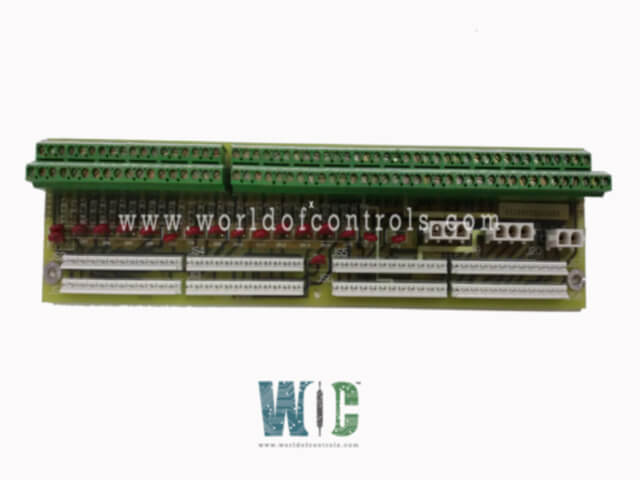
World Of Controls understands the criticality of your requirement and works towards reducing the lead time as much as possible.
DS200DTBDG1ABA - Contact Output Expansion Termination Module is available in stock which ships the same day.
DS200DTBDG1ABA - Contact Output Expansion Termination Module comes in UNUSED as well as REBUILT condition.
To avail our best deals for DS200DTBDG1ABA - Contact Output Expansion Termination Module, contact us and we will get back to you within 24 hours.
Part No.: DS200DTBDG1ABA
Manufacturer: General Electric
Country of Manufacture: United States of America (USA)
Product Type: Contact Output Expansion Termination Module
Availability: In Stock
Series: Mark V
DS200DTBDG1ABA is a Contact Output Expansion Termination Module developed by GE. It is a part of Mark V control system. The Contact Output Expansion Termination Module (DTBD) is strategically positioned within Q11, Q21, and Q51 within the system. It serves as a crucial link to the 30 relays located on the TCRA, specifically integrated into location five of Q11, Q21, and Q51. This setup allows DTBD to effectively manage and control the relay outputs, ensuring precise operational coordination.
The WOC team is always available to help you with your Mark V requirements. For more information, please contact WOC.
What is DS200DTBDG1ABA?
It is a Contact Output Expansion Termination Module developed by GE under the Mark V series.
Why is J20 connected to J19?
J20 is connected to J19 to deliver consistent 125 V dc power to contact outputs 47 and 48. This configuration ensures reliable operation of the contact outputs in Q11 and Q51.
Why is the power supply configuration different in Q21?
In Q21, the connection for supplying 125 V dc power to contact outputs 47 and 48 (via J19 and J20) is absent, indicating a different operational setup or requirement specific to that location.
What is the significance of these connectors in system operation?
These connectors (JS1 through JS8, J8, J19, and J20) are crucial for maintaining operational integrity by facilitating signal reading, solenoid activation, and consistent power delivery to critical components within the system.